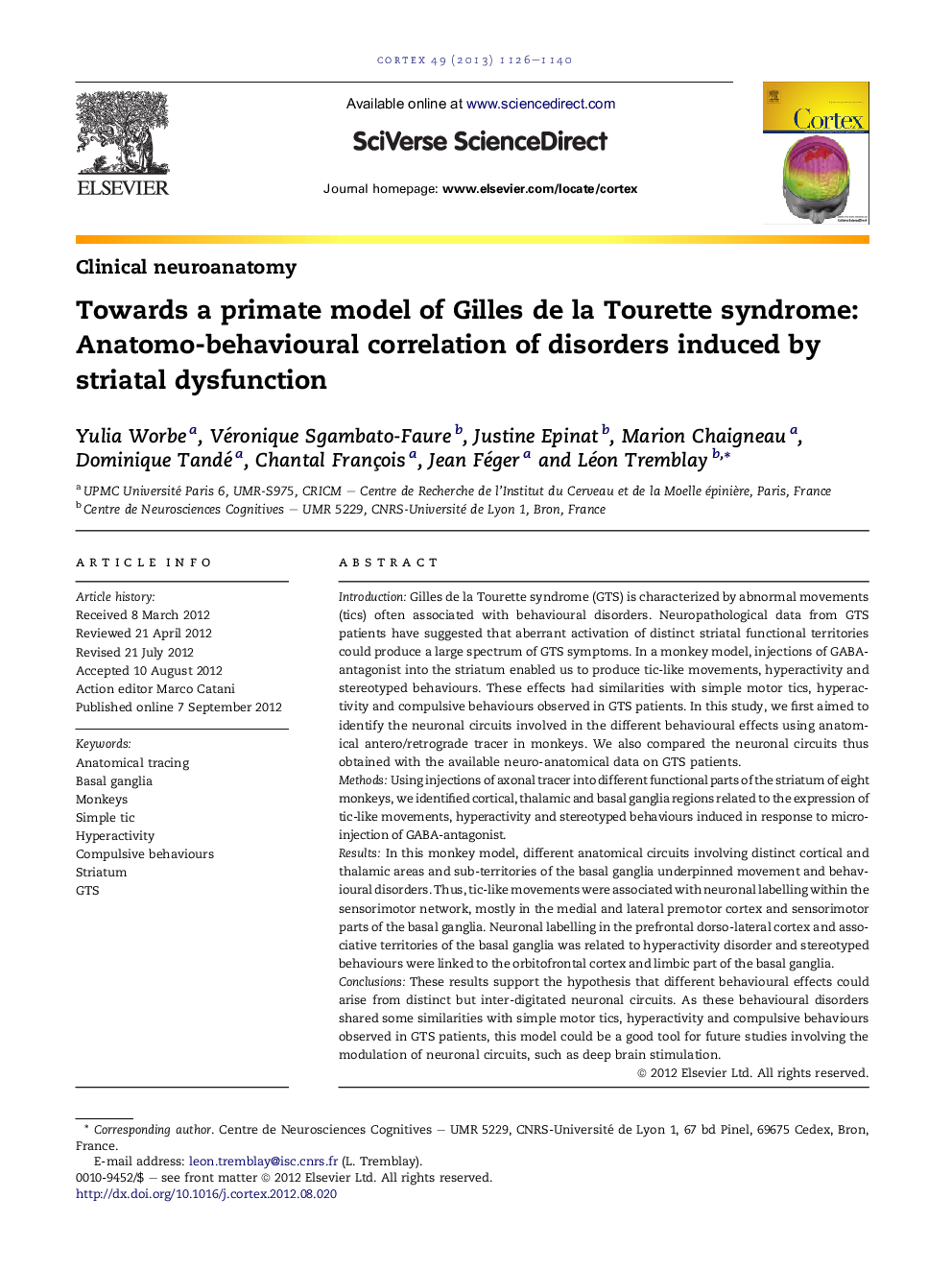| Article ID | Journal | Published Year | Pages | File Type |
|---|---|---|---|---|
| 942102 | Cortex | 2013 | 15 Pages |
IntroductionGilles de la Tourette syndrome (GTS) is characterized by abnormal movements (tics) often associated with behavioural disorders. Neuropathological data from GTS patients have suggested that aberrant activation of distinct striatal functional territories could produce a large spectrum of GTS symptoms. In a monkey model, injections of GABA-antagonist into the striatum enabled us to produce tic-like movements, hyperactivity and stereotyped behaviours. These effects had similarities with simple motor tics, hyperactivity and compulsive behaviours observed in GTS patients. In this study, we first aimed to identify the neuronal circuits involved in the different behavioural effects using anatomical antero/retrograde tracer in monkeys. We also compared the neuronal circuits thus obtained with the available neuro-anatomical data on GTS patients.MethodsUsing injections of axonal tracer into different functional parts of the striatum of eight monkeys, we identified cortical, thalamic and basal ganglia regions related to the expression of tic-like movements, hyperactivity and stereotyped behaviours induced in response to microinjection of GABA-antagonist.ResultsIn this monkey model, different anatomical circuits involving distinct cortical and thalamic areas and sub-territories of the basal ganglia underpinned movement and behavioural disorders. Thus, tic-like movements were associated with neuronal labelling within the sensorimotor network, mostly in the medial and lateral premotor cortex and sensorimotor parts of the basal ganglia. Neuronal labelling in the prefrontal dorso-lateral cortex and associative territories of the basal ganglia was related to hyperactivity disorder and stereotyped behaviours were linked to the orbitofrontal cortex and limbic part of the basal ganglia.ConclusionsThese results support the hypothesis that different behavioural effects could arise from distinct but inter-digitated neuronal circuits. As these behavioural disorders shared some similarities with simple motor tics, hyperactivity and compulsive behaviours observed in GTS patients, this model could be a good tool for future studies involving the modulation of neuronal circuits, such as deep brain stimulation.
